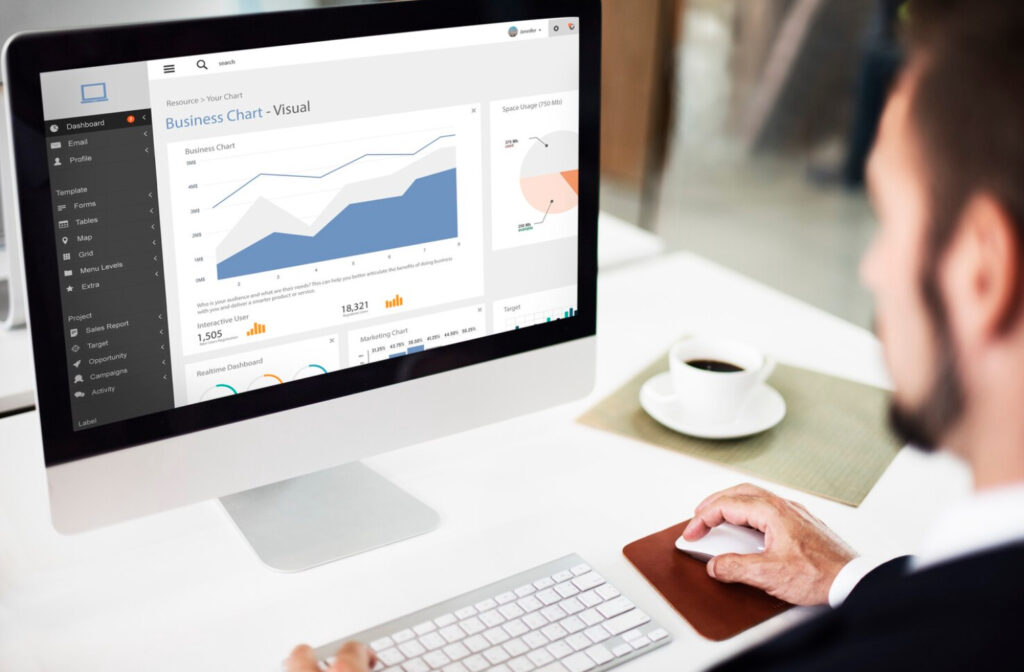Handling high traffic can be both exhilarating and challenging, but fear not! We’ve got exclusive tips and techniques to ensure that your online store runs smoothly, even during peak periods. Whether you’re a beginner or a seasoned WordPress user, these insights will help optimize your site and provide a seamless shopping experience for your customers. Let’s explore how to effectively navigate the exciting realm of high traffic eCommerce!
Optimizing Website Performance
When handling high traffic on your WordPress eCommerce site, it’s essential to employ various strategies to optimize your website’s performance. One effective method is to utilize a content delivery network (CDN) to distribute your website’s content across multiple servers located in different geographic areas. This helps reduce latency and improve loading times for users across the globe. Another crucial tip is to implement browser caching, which allows for quicker access to resources by storing static files locally on a user’s device. This reduces the need to repeatedly download the same files from the server, enhancing the overall user experience. Additionally, optimizing images by compressing them without compromising quality can significantly improve loading times, especially for visitors on slower internet connections. Finally, minifying CSS, JavaScript, and HTML files by removing unnecessary characters and spaces is essential for reducing file sizes and speeding up the rendering process for web pages. These strategies combined can help ensure smooth user experiences, even during high traffic periods.
Utilizing Content Delivery Networks
Choosing a reliable CDN provider with a global network of edge servers is crucial for ensuring high availability and reliability when delivering content to your website visitors. By regularly monitoring CDN performance metrics, you can swiftly identify any bottlenecks or latency issues, allowing for prompt optimization of content delivery and overall website performance. Additionally, leveraging the HTTPS protocol in conjunction with your CDN not only ensures secure data transmission but also helps build trust with users while efficiently delivering content around the world. Another valuable tip is to consider implementing dynamic content caching at the edge servers, further enhancing the speed and responsiveness of your WordPress eCommerce site. These strategies combined can greatly contribute to handling high traffic and providing a seamless user experience.
Implementing Caching Mechanisms
For efficient handling of high traffic on your WordPress eCommerce site, it’s crucial to employ plugin-based caching solutions tailored for WordPress websites. These solutions efficiently store and retrieve frequently accessed data, significantly reducing load times and server load. Additionally, configuring server-side caching mechanisms, such as object caching and database query caching, can minimize repetitive processing tasks and improve overall system performance during periods of high traffic. Exploring advanced caching techniques like opcode caching or full-page caching is also beneficial, as it generates prebuilt versions of web pages, delivering rapid responses to visitor requests without overloading the server. Furthermore, integrating Content Delivery Network (CDN) with your caching mechanisms creates a robust infrastructure that accelerates content delivery while effectively handling high traffic.
Scaling Server Resources
Consider upgrading your hosting plan to accommodate the increased traffic and resource demands. By optimizing your server and implementing caching mechanisms, you can effectively reduce the load on the server during peak traffic, ensuring smooth operations for your WordPress eCommerce site. Additionally, utilizing a content delivery network (CDN) can help distribute the load and deliver content more efficiently to users across the globe, enhancing the overall user experience. It’s also essential to employ efficient coding practices and optimize database queries to minimize server resource usage, further contributing to the seamless handling of high traffic on your website.
Upgrading Hosting Plan
When preparing to handle high traffic on your WordPress eCommerce site, it’s crucial to evaluate your current hosting plan’s limitations in terms of scalability and resource allocation. Consider upgrading to a dedicated or cloud-based hosting solution that offers improved scalability to meet the demands of high traffic without compromising performance. Ensure that the new hosting plan provides ample bandwidth, storage, and processing power to effectively handle spikes in traffic. Look for hosting providers that offer scalable solutions, allowing you to conveniently adjust resources based on fluctuations in website traffic. Additionally, consider managed hosting services that include proactive monitoring and optimization for high-traffic scenarios, easing the operational burden on your end and ensuring a seamless user experience.
Utilizing Load Balancing Techniques
To effectively handle high traffic on your WordPress eCommerce site, implementing load balancing across multiple servers is crucial for evenly distributing incoming traffic and preventing overloading a single server. Additionally, utilizing session persistence or sticky sessions ensures that user sessions are maintained with the same server, enhancing the user experience during peak traffic periods. Exploring auto-scaling options can further provide seamless scalability by automatically adding more resources or servers as needed. It’s also essential to regularly monitor server loads and adjust load balancing configurations based on traffic patterns to optimize resource utilization, contributing to the overall smooth operation of your website during high-traffic situations.
Database Optimization
To effectively handle high traffic on your WordPress eCommerce site, it’s essential to utilize caching plugins tailored for WordPress websites. These plugins play a crucial role in minimizing database queries and significantly improving site performance, ensuring a seamless user experience during peak traffic periods. Additionally, regularly cleaning up post revisions, trashed items, and spam comments is recommended to reduce database clutter, further enhancing overall system performance. Considering the use of a content delivery network (CDN) can also help distribute site assets and alleviate server load, contributing to efficient content delivery worldwide. Furthermore, optimizing images and implementing lazy loading techniques can decrease the strain on the database when serving media content, ultimately improving the site’s responsiveness and scalability.
Indexing Database Tables
To optimize data retrieval processes on your WordPress eCommerce site, it’s essential to identify and index frequently queried columns. This helps speed up the data retrieval process and ensures efficient querying. However, it’s important to avoid over-indexing, as it can lead to increased storage requirements and slower write operations. Periodically monitoring index fragmentation and reorganizing indexes is crucial for maintaining optimal query performance. Additionally, utilizing composite indexes for queries involving multiple columns can significantly enhance search efficiency, further improving the overall performance of your site.
Cleaning Up Unused Data
To maintain optimal database performance for your WordPress eCommerce site, it’s crucial to regularly declutter the database by removing unused plugins, themes, and media files. Implementing automated scheduled tasks can aid in cleaning up transients and expired session data, ensuring the database remains efficient. Additionally, consider utilizing tools or scripts to analyze and clean up orphaned or duplicate database records to further streamline database operations. Evaluating the necessity of log data and purging old logs that are no longer essential for analysis or troubleshooting can also contribute to database optimization and overall site performance.
Code Optimization
Minifying CSS and JavaScript files is a key step in optimizing the performance of your WordPress eCommerce site. By reducing the file sizes, you can achieve faster loading times, enhancing the user experience, especially during peak traffic periods. Utilizing browser caching with proper cache-control headers is another effective strategy to boost your website’s performance. Implementing a Content Delivery Network (CDN) can further distribute the content delivery load across multiple servers, alleviating the strain on individual servers and improving overall responsiveness. Additionally, regularly auditing and optimizing database queries is crucial for maintaining speed and responsiveness, contributing to the seamless operation of your WordPress eCommerce site.
Minifying CSS and JavaScript Files
Automating the minification of CSS and JavaScript files using tools like Gulp or Grunt can significantly streamline the optimization process, ultimately saving valuable time and effort. Additionally, the removal of unnecessary white spaces, comments, and unused code from these files can effectively reduce their size without compromising functionality, contributing to improved loading times. Another beneficial strategy involves consolidating multiple CSS and JavaScript files into single files, thereby minimizing server requests and further enhancing load times. Furthermore, employing compression methods such as Gzip can additionally reduce the size of these files, facilitating faster transmission over the network.
Utilizing Lazy Loading for Images
To enhance the loading speed of your WordPress eCommerce site, implementing lazy loading for images can be incredibly beneficial. This technique allows only the visible images to load initially, deferring the off-screen images until they are about to come into view, which significantly improves page loading speed. Additionally, utilizing responsive image attributes such as ‘srcset’ ensures that appropriate image sizes are delivered based on the user’s device, optimizing overall performance. To simplify the implementation of lazy loading, consider using plugins like WP Rocket or Lazy Load by WP Rocket. Furthermore, prioritizing image optimization by choosing the right file format (JPEG, PNG, WebP) and resizing images to fit their display dimensions can further contribute to improved site speed.
Monitoring and Testing
Utilizing performance monitoring tools is crucial for keeping track of your WordPress eCommerce site’s performance and swiftly identifying any bottlenecks or issues. Regularly conducting load testing and stress testing is key to ensuring that your site can effectively handle high traffic without crashing or slowing down, maintaining a seamless user experience. Implementing A/B testing allows you to compare different versions of your website and determine which performs better under high traffic conditions, enabling you to make informed optimizations. Additionally, implementing uptime monitoring provides valuable alerts if your site goes down, empowering you to take immediate action to minimize downtime and maintain consistent accessibility for your visitors. These proactive measures significantly contribute to the smooth operation of your WordPress eCommerce site, especially during peak traffic times.
Utilizing Performance Monitoring Tools
Integrating Google Analytics into your WordPress eCommerce site can provide valuable insights into visitor behavior, popular products, and traffic sources, allowing you to optimize for high traffic scenarios. Additionally, utilizing tools like New Relic or Dynatrace enables you to monitor server performance, database queries, and external API calls for potential performance bottlenecks. Setting up real-user monitoring (RUM) to track actual user interactions and employing application performance management (APM) tools to trace transactions, detect errors, and optimize overall performance are essential steps in preparing your site for handling high traffic loads effectively. These proactive measures empower you to make informed decisions and ensure a seamless user experience, even during peak traffic periods.
Conducting Load Testing and Stress Testing
To ensure your WordPress eCommerce site can handle high traffic effectively, it’s essential to simulate high traffic scenarios using tools like Apache JMeter or LoadNinja. By gradually increasing the number of concurrent users in load tests, you can identify the threshold at which your site begins to struggle with performance, and conduct stress tests to understand its breaking point. Analyzing the results of these tests allows you to fine-tune caching mechanisms, server configurations, and resource allocation for optimal high-traffic performance, ensuring a seamless experience for your visitors even during peak traffic times.
Conclusion
In conclusion, optimizing the performance of your WordPress eCommerce site is crucial for handling high traffic without compromising on speed or functionality. Utilizing content delivery networks, implementing caching mechanisms, and scaling server resources are essential strategies to enhance site performance. Database optimization, code optimization, and monitoring tools such as Google Analytics, New Relic, and LoadNinja play a vital role in identifying and addressing performance bottlenecks. Additionally, employing techniques like lazy loading for images, minifying CSS and JavaScript files, and conducting load testing and stress testing are proactive measures to prepare your site for peak traffic periods. By integrating these exclusive tips and techniques, you can significantly improve the scalability and responsiveness of your WordPress eCommerce site, providing visitors with a seamless and satisfying user experience, even during periods of high traffic.


